Blizna and Niwiska, two wilderness villages in Poland, share a prominent place in America’s history of space travel. It was there the German’s top-secret V-1 and V-2 rockets were launched for experimental and training purposes during WWII from 1943 to the summer of 1944. The research and knowledge acquired from the V-1 and V-2 missile program that ended in Blizna would lead to the first intercontinental ballistic missile, the first spy satellite and the “small step” taken by astronaut Neil Armstrong.
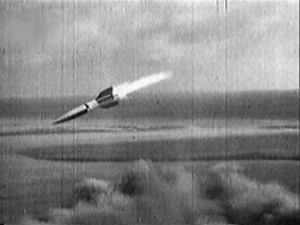
V-2 missile crashing during WWII
The post-WWII space race between the Soviet Union and the United States had its origins in these remote villages because of what their scientists had learned about rocket engineering. During the war, much of this information was smuggled to the Allies due to the amazing dedication of the local foresters and AK or Armia Krajowa. The Russians pushed out the Germans in August 1944 and were desperate to retrieve missile fragments and information the Nazis had left behind.

Fragments of missile assembly area in Blizna
The story begins in the years preceding WWII. Wernher von Braun, a preeminent scientist of Germany’s pre-war rocket development program and later the post-war director of NASA’s Marshall Space Flight Center was inspired in the 1930s by a science fiction movie “Woman in the Moon.” What had been conceived as a creative and ambitious vision of von Braun and his peers for space travel was turned into a sinister weapon of mass destruction by the Nazis. Von Braun worked at the Peenemunde and Blizna test sites and personally visited the missile impact areas to troubleshoot any problems discovered during trials.
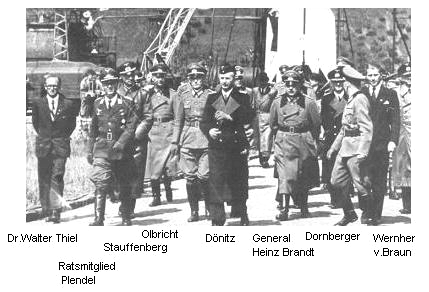
von Braun with German officers in Blizna
The development of the V-1 flying bomb and the V-2 missile was originally housed in Peenemunde on the Baltic coast in Germany until the Allies destroyed much of the facility in August 1943. While the scientists’ housing was the first target, the British unfortunately also destroyed the nearby concentration camp. Some of the prisoners who perished were the ones who first alerted the British to the existence of Hitler’s top-secret weapon’s program.
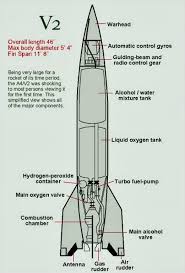
The research and testing program for the V-1 and V-2 missiles was then moved to the secluded area near Blizna in the fall of 1943. The adjacent villages of Niwiska and Pustkow had been previously evacuated to house an SS military base in the early years of the war and had been well developed by the time of the missile program’s move to Blizna. Himmler himself recommended the move to this area.
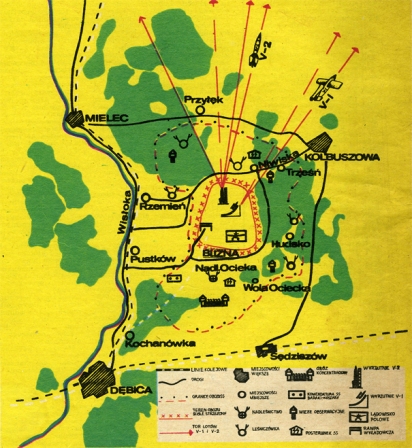
The new location in Blizna was desirable as it was outside the range of the Allied bombers. Most of the villagers had already been evacuated to live in nearby villages. Other villagers who were forced to serve the Nazi’s goals lived in facilities within the boundaries of Camp Heidelager, the largest SS training camp outside of Germany while they worked in construction, farming, carpentry, and as maids, cooks, and servants.
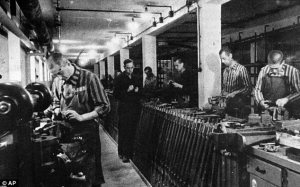
Polish Slave Laborers in a German Ammunition Factory
Two hundred of the slave laborers came from the concentration camp in nearby Pustkow. They were used to build the new infrastructure starting with concrete roads and then a narrow-gauge railway to link to the station at Kochanowka. Barracks, bunkers, buildings and specialized equipment for the firing of the rockets were needed. During WWII 15,000 people died in the Pustkow Concentration Camp.
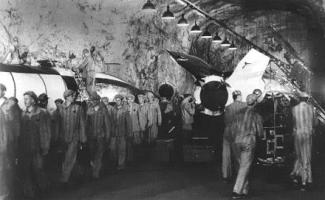
Polish Slave Laborers working for the Germans
Efforts were made to disguise the launching sites as much as possible. The Nazis built an artificial village, hoping the area would appear inhabited when the Allies took aerial photos. Cottages and barns made of plywood, lines hung with clothes and bedsheets, and plaster statues of people and animals were created to enhance the deception.
The site in Blizna was of high strategic importance and attracted personal visits from the most high-ranking Nazi officers: Heinrich Himmler, Hans Hammler, and Gottlob Berger. Adolf Hitler visited in the spring of 1944.

Himmler’s visit to Blizna
The missile testing ground at Blizna, commanded by Dr. Walter Dornberger, was soon identified by the Polish resistance movement thanks to reports from local farmers and foresters. The AK field agents managed to obtain pieces of the fired rockets by arriving on the scene before German patrols. The Germans were aware of the AK, but the AK was always watching the Germans.
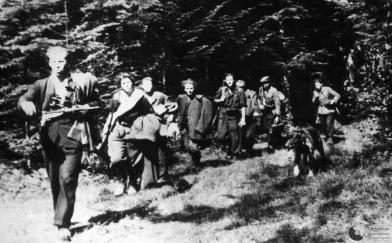
Polish Underground Fighters (Armia Krajowa- AK)
The AK Home Army partisans were actively involved in the sabotage of the missiles originally built at the Mittelbau-Dora Concentration Camp. A group from the Polish underground had infiltrated the crew and sabotaged the construction. Once the flawed rockets were placed on their launching pads, they did not follow the programs and commands of the microcomputers. The rockets would lift off but then fall back either directly on the spot or would fly off course. The saboteurs had either cut the wires or slackened the fuel conduits.
Learning of this sabotage, Von Braun intervened and decided the rockets should be dismantled at Mittelbau- Dora before transport and then reassembled in Blizna. This was done in the assembly hall close to the barracks near the road to Blizna.
Many local rangers or foresters from Blizna and Niwiska were also agents of the Home Army. Forest Inspector Stachowski was the leader of this close-knit group. The Germans suspected the foresters, but the amount of wood they supplied was an incredibly valuable service and resource for the Nazis. The foresters had access to virtually every location in the local heavily forested territories, and their contributions to uncovering V-weapons secrets were immense.
Fragments of rockets were readily found by the foresters and partisans, and most were covertly transported to the Allies for decoding. Sometimes, local farmers repurposed the high-grade metal into shovels and tools. The punishment for possessing one of these fragments was immediate death.
These heroic acts of sabotage came at a high price: the Nazis killed an average of 300 workers working on the missile production every day through starvation or accidents.
The story of von Braun and his men is fascinating. As the war was ending, they sought out the Americans, and von Braun’s brother brokered an agreement with the US government to immigrate to America. This elite group of scientists could have chosen to work with England or the Soviet Union, so it was in America’s best interests to offer them asylum.
So, it can be said that Blizna and Niwiska had a prominent role in America’s space program. Out of the ashes of Nazi-occupied Europe, a group of German scientists decided to cut a deal with the Americans. Their German rocketry expertise was combined with the efforts of independent wartime scientists in California. With Werner von Braun, they carried the keys to the Space Age to America.

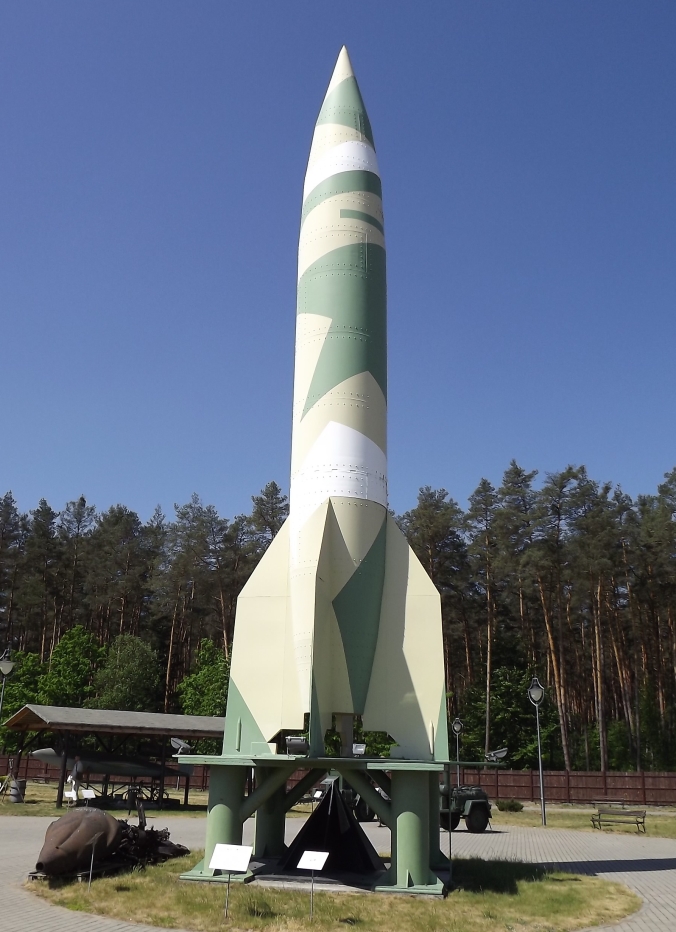
A Model of a V-2 at the Blizna Historical Park
Please look for the soon to be released historical novel “War and Resistance in the Wilderness” that tells the story of the brave partisans from this area of Poland.
The Arrow was in Poland also, the ships stored in a geologically stable mine. This was moth balled. The ships traveled without rockets and were useless for weapons.Their long distance bus drivers deserted shortkly after 1939. The nazis had subsidized them in the thirties with blood money. Theywent across agricultural Europe, crossed the channel, and eventually made their way to Canada. They came back at the end of the war.AVRO Canada had all these Polish test pilots. The US paid the bills. All the new arrows were destroyed in February 1959.
Other things were found nearby. Nazi experiments for example, that would never have been found. The island of Dr. Moreau was based on real instances.
LikeLike
Very interesting post Donna – thanks.
You might be interested in this article: https://www.theguardian.com/global/2019/jul/19/apollo-women-man-walk-on-the-moon
Also, there is a very cool interactive multimedia history of the space program here with music and audio: http://inspacewetrust.org/en/
Mott Given
LikeLike
Excellent story……this story should be aired widely….
LikeLike
Thanks! Very interesting. You are a great inspiration to those interested in history.
LikeLike
Thank you for providing this info related to the early stages of what would become ‘space
travel’! Most interesting!
LikeLike
Greatt read
LikeLike